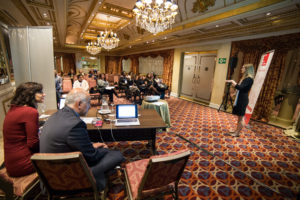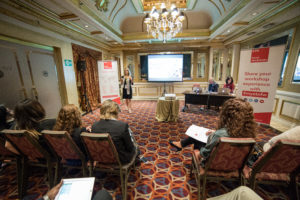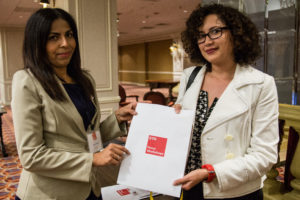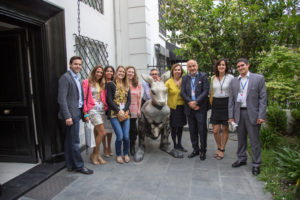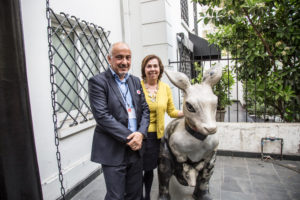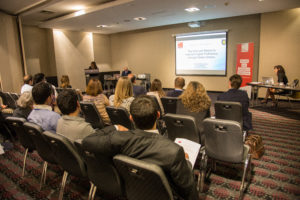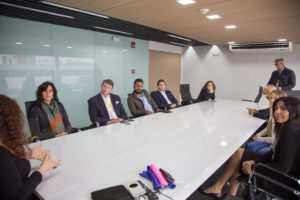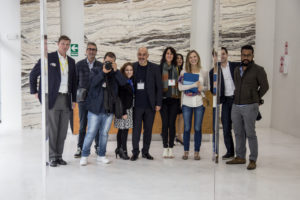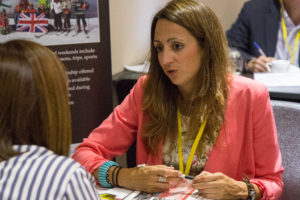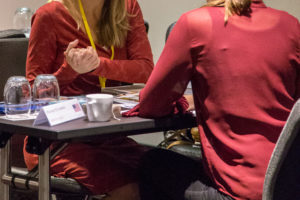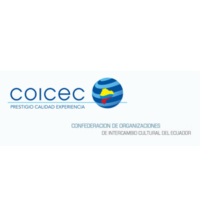Checklist For International Student Offices: Gender Equality
Attracting and retaining a diverse and vibrant international student body is an objective for every university that aspires to provide quality international education. Ensuring that students from different backgrounds feel appreciated, welcomed and engaged creates conditions for empowered and confident young professionals who push the boundaries in their field of expertise. All this begins in the international student office. Ensuring real opportunities for a wide variety of students to enrol is the first step towards a truly diverse student body. Later on, it contributes towards a diverse and inclusive international students community.
Diversity on campus has many dimensions. Today we will look into the most obvious one – gender equality.
What exactly does a truly diverse student body consist of and how to provide more opportunities for every student? Keep reading to find out!

Equal numbers of both men and women enrolled in every field
Obviously, one of the first steps towards true equality is ensuring equal opportunities for men and women.
In most Western countries, that is the norm. Around the same number of men and women study in the UK. In the US, in most cases women even outnumber men.
The situation in many non-Western countries, however, remains quite problematic. For instance, Saudi Arabia may be boasting of having more women studying than men and even about opening a university for women, but these advancements have little impact on society if after completing their studies, women don’t have the freedom to work and put their knowledge to good use.
Another major gender issue we see in most countries in the world is that male students tend to pursue education in STEM, while females choose social sciences or humanities.
In Nigeria, one of the most populous countries in Africa, only 17% of women become researchers in STEM fields.
Even in a country like Iceland, which is a shining example of gender equality, women may outnumber men in universities, but still end up choosing careers in the care sector, and not in computer science.
What is interesting though is that in the US, more women go to study abroad than men (sometimes the ratio is 1:2 or even 1:3).
This trend can be explained in a couple of ways. As mentioned above, more women study abroad because there are more women enrolled in universities in general. Social sciences and humanities usually require additional skills and knowledge – global perspective, language knowledge or higher emotional intelligence. Meanwhile, STEM fields require a more structured learning process that does not necessarily improve with additional skills. That is the reason why female studies are more active in applying for universities abroad – social sciences and humanities require a wider spectrum of interdisciplinary skills.
What could be done about this?
- Start with your faculty: Your faculty represents your community. Are there equal numbers of male and female faculty staff teaching social sciences and STEM? Your faculty members are the role models for your students, so make sure you have a good balance there.
- Use the right language: Do you have enough options in English (or other major language) in every field? Are your courses for international students available on both basic and advanced research levels? Make sure that you don’t miss out on international students who would like to join your university but cannot find adequate learning opportunities.
- Update policy and promote campaigning: While having quotas is not working out for every educational institution, maybe it is an option that would help you build a more diverse student body. Try to identify the courses that lack gender diversity. Then, you can set up marketing campaigns to attract more international students of the missing gender.
- Explore blended learning: On many occasions, young women give up studying due to family responsibilities. For instance, they feel pressure to get married, have and take care of children. As a result, many young women, especially in developing countries, never get to pursue or finish a degree. Setting up online programs with opportunities to work from home and visit the university only for short-term sessions could be a possible solution for such students.
- Improve facilities: We talked about role models in the faculty. These role models themselves need to be confident that their work will continue after they have a family and children. Ensuring that both male and female faculty members can get a sick day to take care of their children is just one step towards a happy and inclusive faculty. If you are thinking about taking it even further, you can even consider setting up a small children day care on campus. Not only will your faculty members appreciate it, but it will also provide your students (both international and local) with a brilliant example how career and family can go together.

Please take a couple of minutes to reflect and answer these questions for yourself:
- How many international students choose STEM on my campus? How many of them are female? Male? Do my numbers compare to global enrolment trends and good practices?
- How many international students choose social sciences/humanities on my campus? What is the male-to-female ratio? How do these numbers compare to global trends?
- Do you run campaigns specifically to promote gender equality?
- What kind of blended learning programs do you provide for your students?
- How many programs do you offer for international students? How many of your currently non-English programs could be taught in English?
- What kind of family-friendly activities can you offer for your faculty members, staff and students?
Does your campus face similar problems? Do you have a great advice for how to have a balance of students in various fields?
Share your experiences in the comments!



















